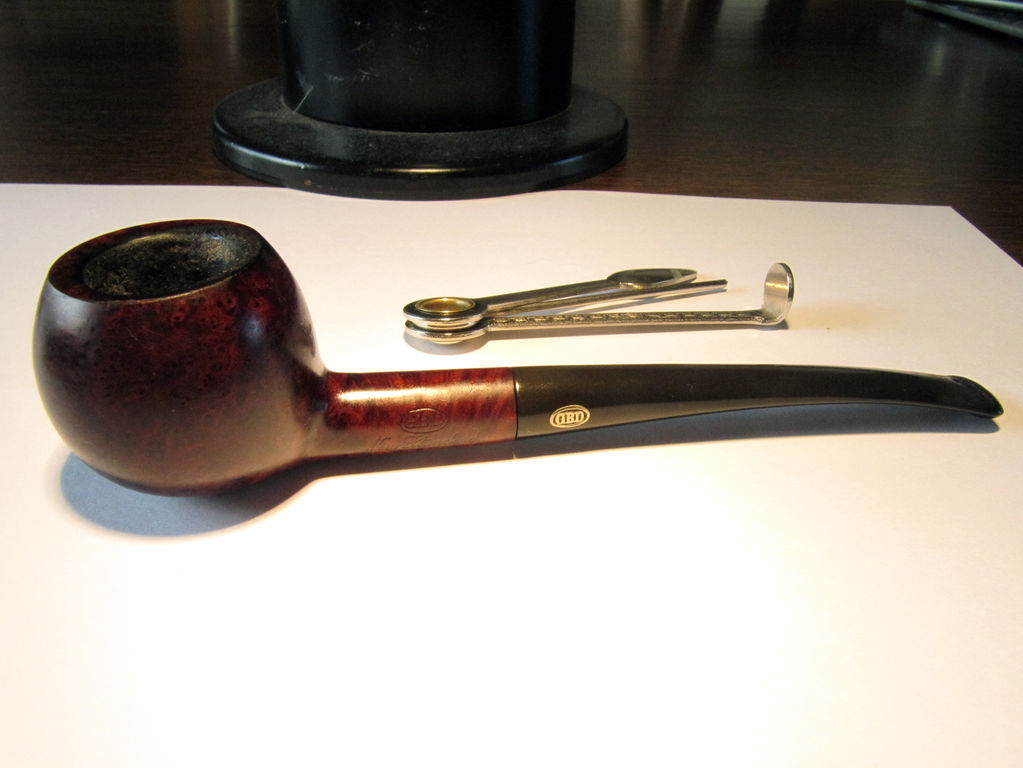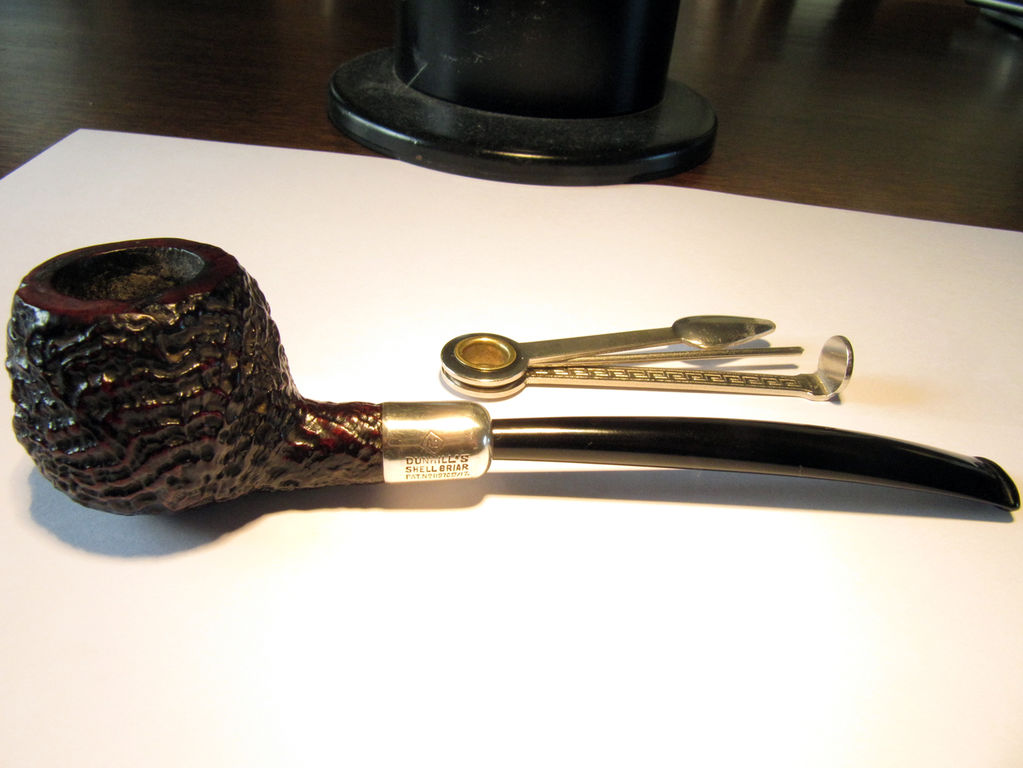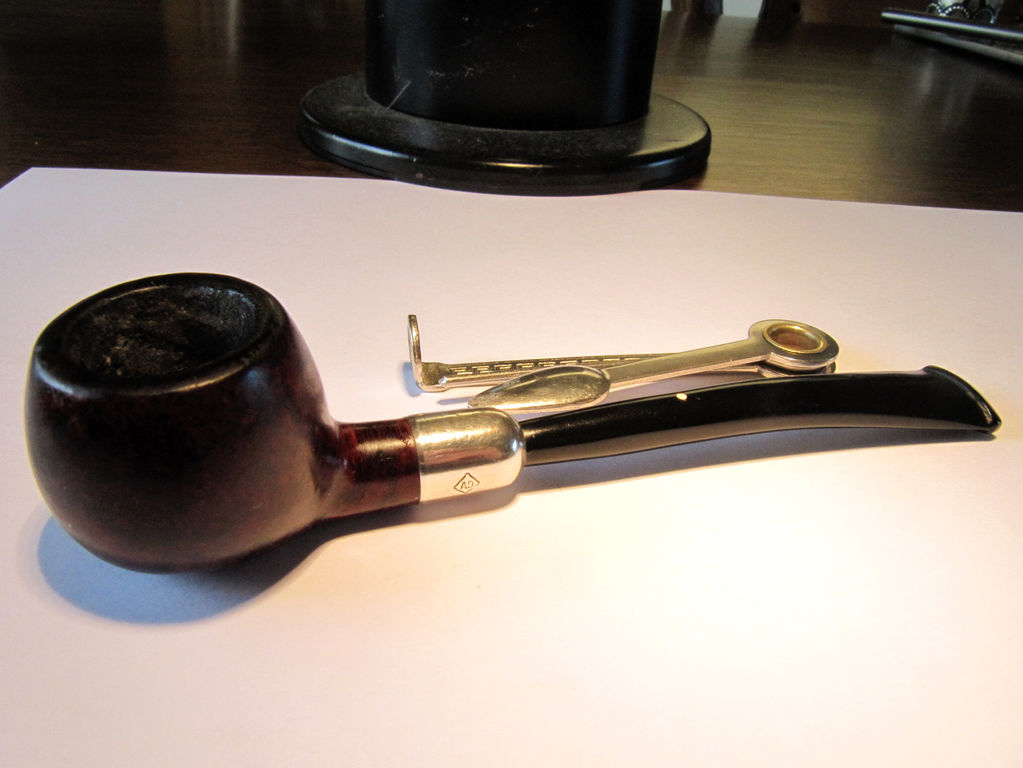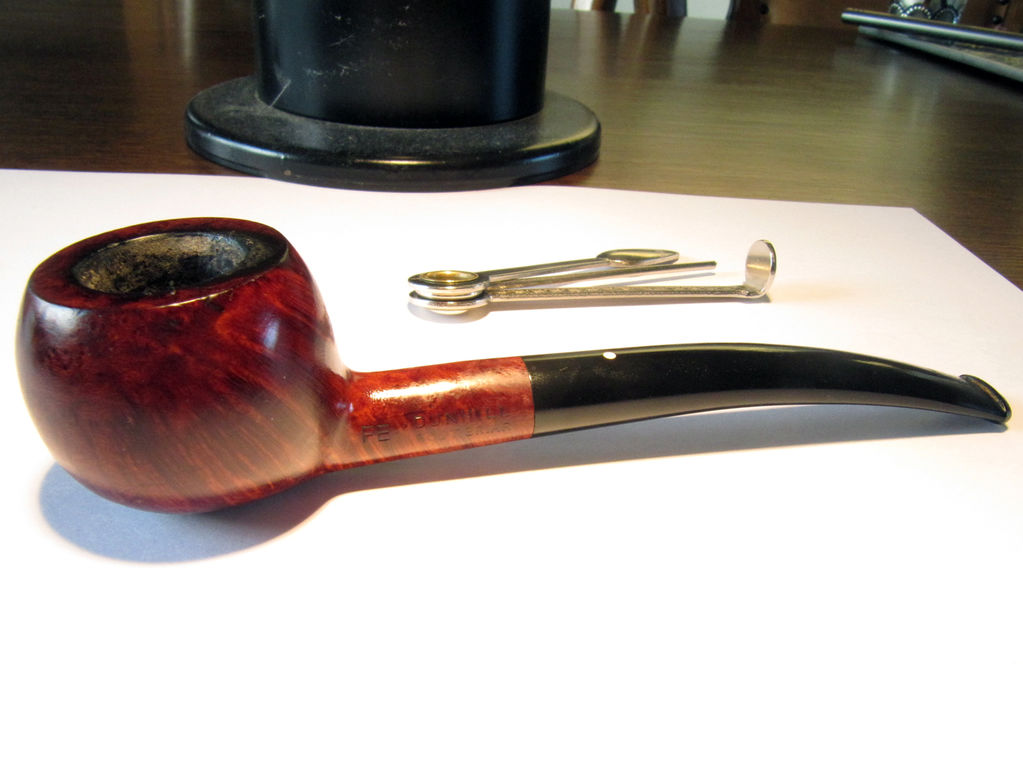The first half year that I smoked pipe I was looking for a shape that appealed to me. One that was able to make my favourite latakia mixtures shine. I found it in the Prince of Wales (or in short “prince”) shape pipe.
Before I mostly used full bents. They hung comfortably in my mouth, smoked pretty good, I was satisfied. Until the point that I smoked blends with latakia more and more. I got the feeling I did not got the maximum out of those mixtures. And that frustrated me. What is the point of smoking excellent tobaccos when you can’t get the most out of them??
Then I stumbled upon an article by the famous pipe blogger Neill Archer Roan: Finding That Magic Fit Between Pipe and Tobacco. In short, the complexity and tastefulness of English/Balkan blends is amplified in pot and prince shaped pipes. Those have square tobacco chambers which are most of the times more broad than for instance billiards. Because of that broadness there is more tobacco-surface that burns at once. That means more flavour. This was also acknowledged by the old owner of De Graaff. Once one of the most famous Dutch tobacco shops. The man (apparently a walking pipe and tobacco encyclopaedia) always smoked latakia mixtures from a pot. Yes, which has the same smoking characteristics as a prince.
But I prefer a prince above a pot. This because of the more elegant shape. Pot pipes are often straight and I still like a slight bend in the mouthpiece.
In contrary to common belief the prince shape was not designed by Dunhill, but by Loewe & Co. An old name in British pipe making, similar to brands like Comoy, BBB and GBD. It is said that Emil Loewe (a Frenchmen by origin) was the first to make pipes made from briar in England. Most of the customers in his shop were theatre people from the West End who liked the elegance in his pipes.
In the 1920’s he designed a pipe for Edward, the then Prince of Wales (hence the pipe-shape name “prince”). Who later became Edward VIII and finally was the Duke of Windsor. The shape is a statement of the stylishness of the period. During the reign of his father (also a heavy smoker) Edward was a leading socialite of the 1920’s and 1930’s. The epitome of the elegance of the period. Befitting his royal stature, nothing he owned was less than first class. His taste was impeccable. At least, that is the story..
My story continues when I asked on the Dutch pipesmokers forum if anyone had a prince shaped pipe and was willing to sell it. One member replied and for a measly sum I was able to buy my first prince. It was a Rossi with two smoking channels in the mouthpiece which made it hell to clean.. The sole reason I sold it some time ago. But the pipe smoked very good! Finally I had the idea I was getting more out of my tobaccos. But when proper used you can smoke a pipe only once a day. So I desperately needed a second one. I had read once that Mr. Pease liked the GBD brand much. So after a short search on e-bay I luckily found a GBD New Standard prince from the ’70’s. This one I still have and is one of my favourite pipes. It tastes amazing, especially with Abingdon. The only downside is that it smokes wet. But nothing a pipe cleaner can’t fix.
From there I bought more and more prince shaped pipes and I fell in love with the Dunhill brand. For me the epitome of the prince pipe is an army mount Dunhill shell briar from the patent era. And a few months ago I managed to acquire one on e-bay! Not easy because 1. they only sporadically become available and 2. are VERY expensive. But being Dutch (read: cheap hehehe) I managed to get it for a really good price. I just got lucky that I bought it from someone who did not know much about pipes. All hail to the pipe-smoke God.
Currently my prince collection consists of the following pipes:









